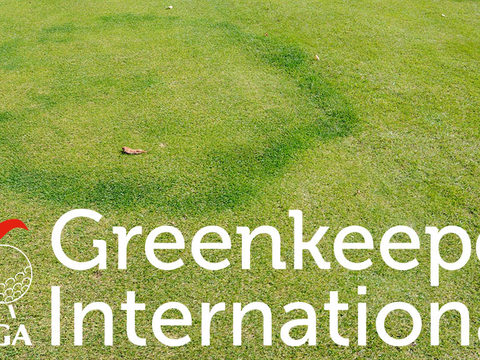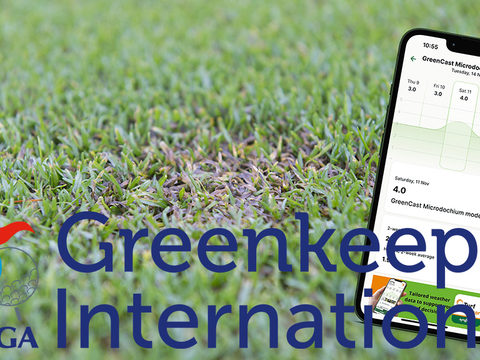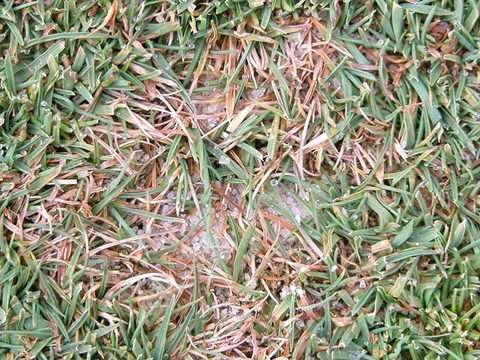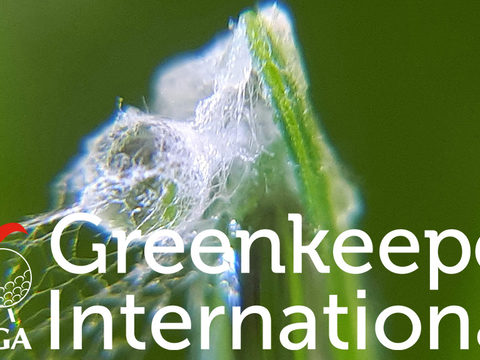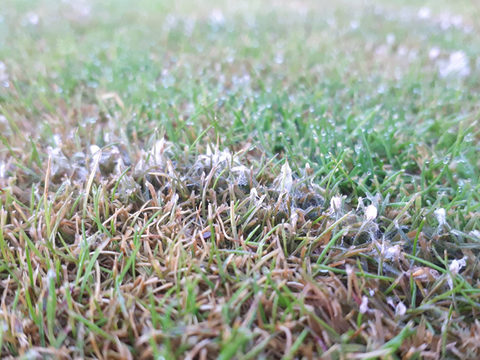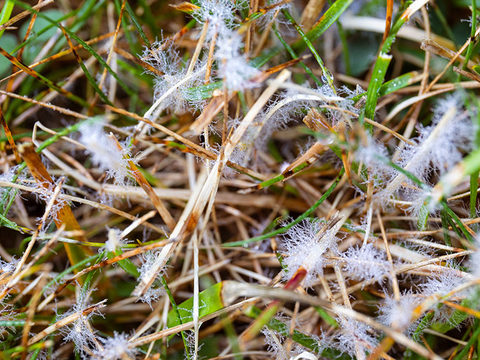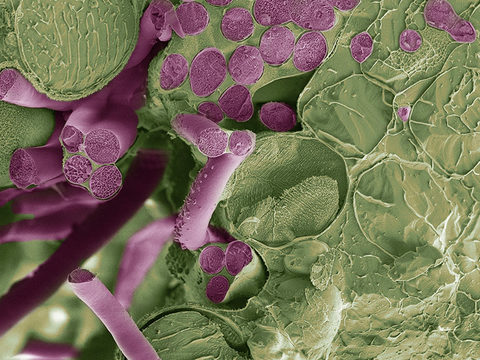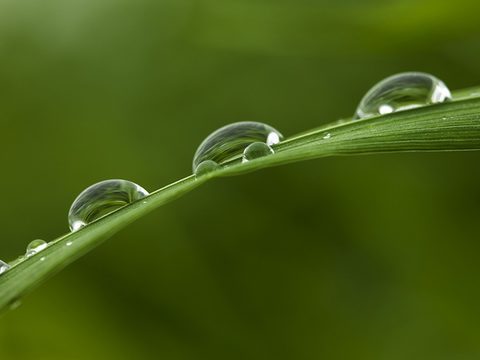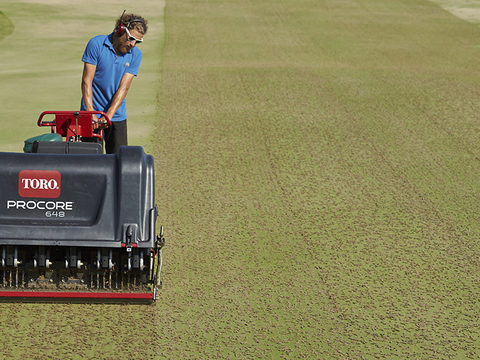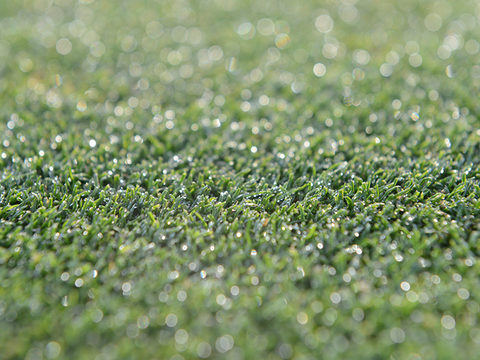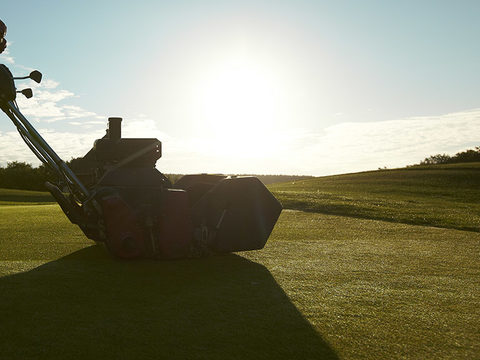Coverage counts to get best from contact activity
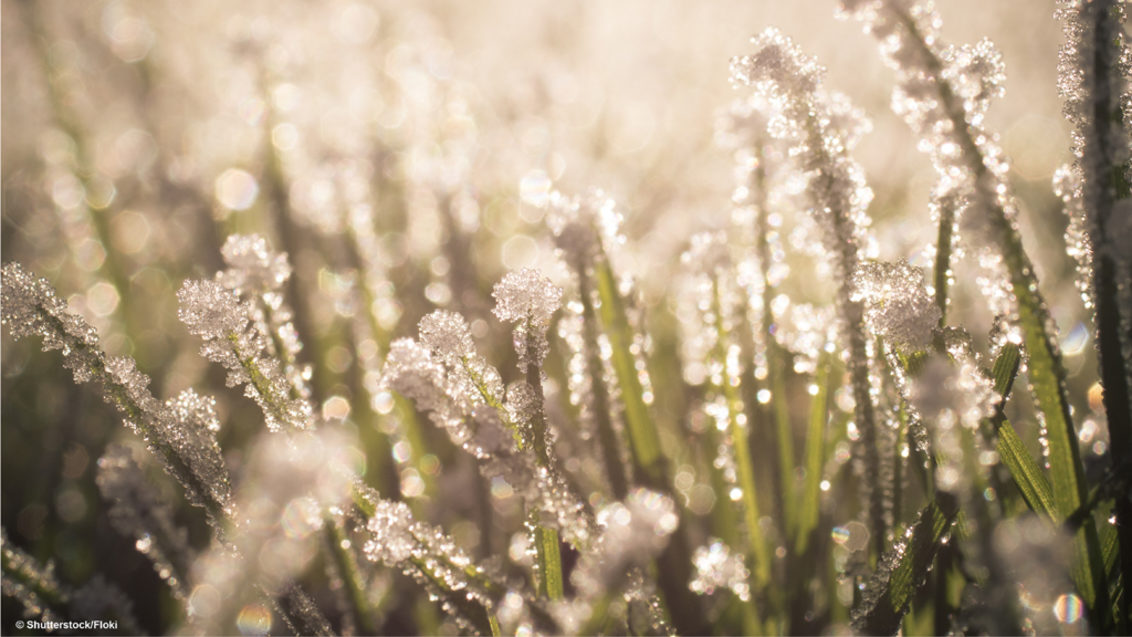
As we look to maintain turf quality through the winter months, Syngenta Technical Manager, Glenn Kirby, reviews some of the latest research on contact fungicide activity to protect the leaf surface.
Fungicides with contact activity have an essential role in preventing damaging disease outbreaks. They can create a first line of defence on the leaf surface to stop disease at the very early stage.
The effects are most relevant in cool conditions, when turf plants are physiologically inactive, when any systemic fungicide active would be slow to be taken up or moved around to tackle infection points.
To get the best from contact activity, complete coverage on the leaf surface is crucial to prevent microscopic disease spores from germinating and stop mycelial growth from getting into the plant, typically through stomata or any physical damage to the leaf (Plate 1).
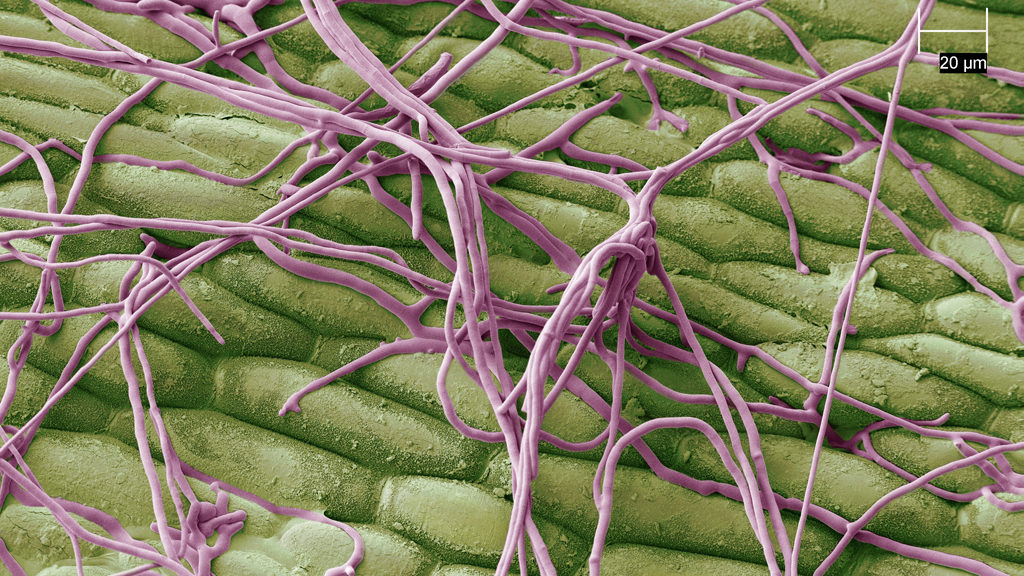
Plate 1. Disease hyphae on turf surface seeking entry points through stomata or leaf damage and gaps in contact fungicide coverage
Elements that will influence leaf coverage include: the active ingredient itself; the formulation of the fungicide; the mix in the spray tank and, extremely importantly, the operator’s application technique.
Formulation matters
During the manufacturing process most fungicide actives are milled and ground to produce finer particles. Each time the diameter is halved, you get eight times the number of particles, which can help to deliver more even surface coverage. However, it is a costly and slow process, which is typically only justified on higher quality, high value, turf-specific formulations.
Electron microscope analysis of leaf surface coverage with the Medallion TL formulation of fludioxonil shows the even spread on the surface, compared to a blocky formulation of an iprodione fungicide (Plate 2).
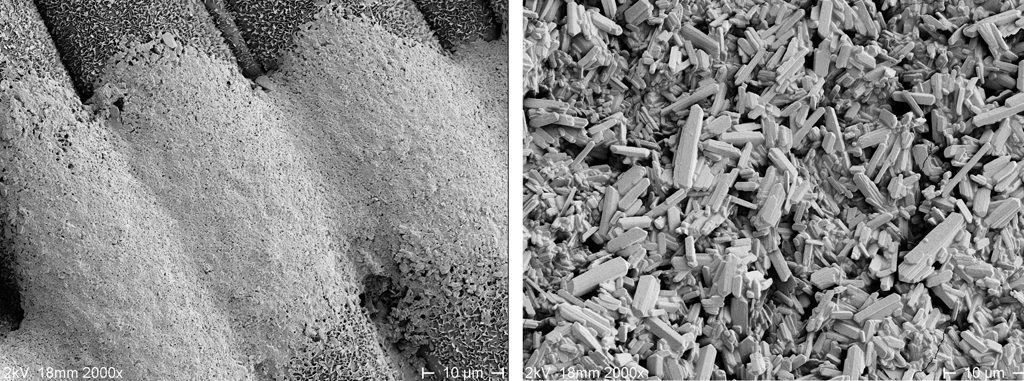
Plate 2. The finely milled formulation of Medallion TL (left) is better able to bind onto the wax layer of the leaf surface to provide seamless coverage, compared to blocky particles of an iprodione fungicide, for example.
The formulation of any product also includes a blend of surfactants and adjuvants designed, among other functions, to keep the active suspended in the spray mix, to hold the spray on the leaf and to help achieve an even surface coverage.
New UK research at the Syngenta Jealott’s Hill International Research Centre is looking at how tank-mix partners could potentially further improve spray retention and coverage to target spores on the leaf surface.
What has already been seen with the trials and analysis of leaf samples after spraying was that Qualibra wetting agent added to the tank-mix had a positive effect in both surface coverage on the leaf and in the leaf wax, compared to Medallion TL sprayed alone (Plate 3).
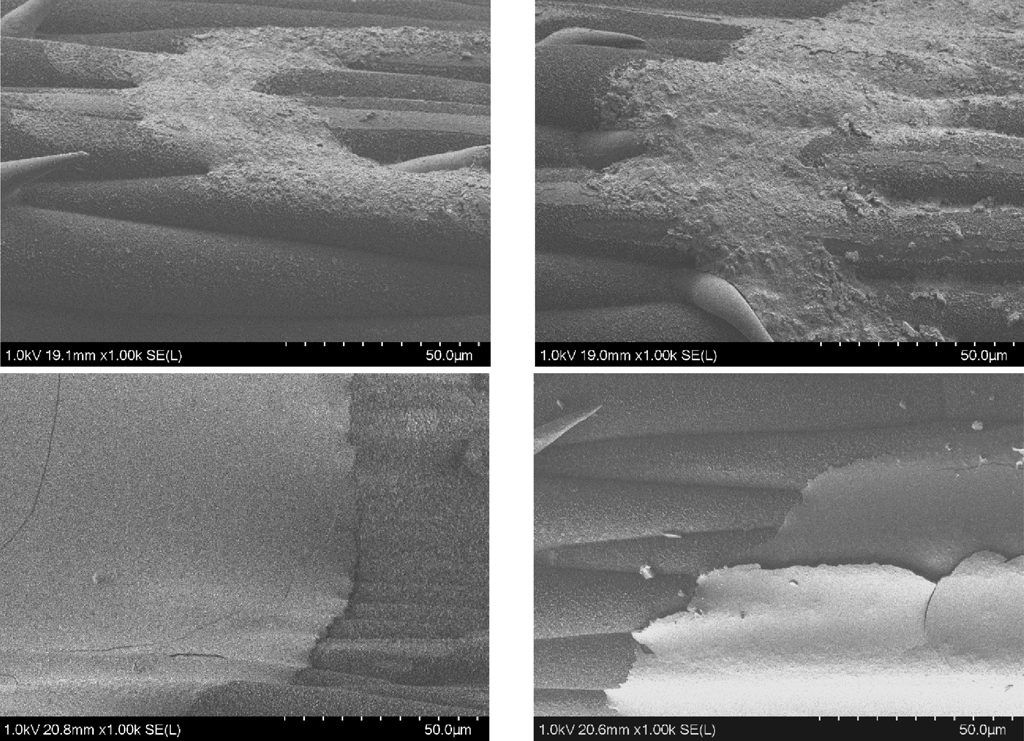
Plate 3. Under electron microscopy analysis the addition of Qualibra in tank-mix with Medallion TL (lower images) appears to give greater spread and coverage from a single droplet, compared to Medallion TL alone (top images)
Trials results showed 5% to 15% greater total recovery of fludioxonil from the surface, wax and tissue in the first hours and day after application with Medallion TL and Qualibra tank mix, compared to the sprayed with the fungicide alone (Fig 4).
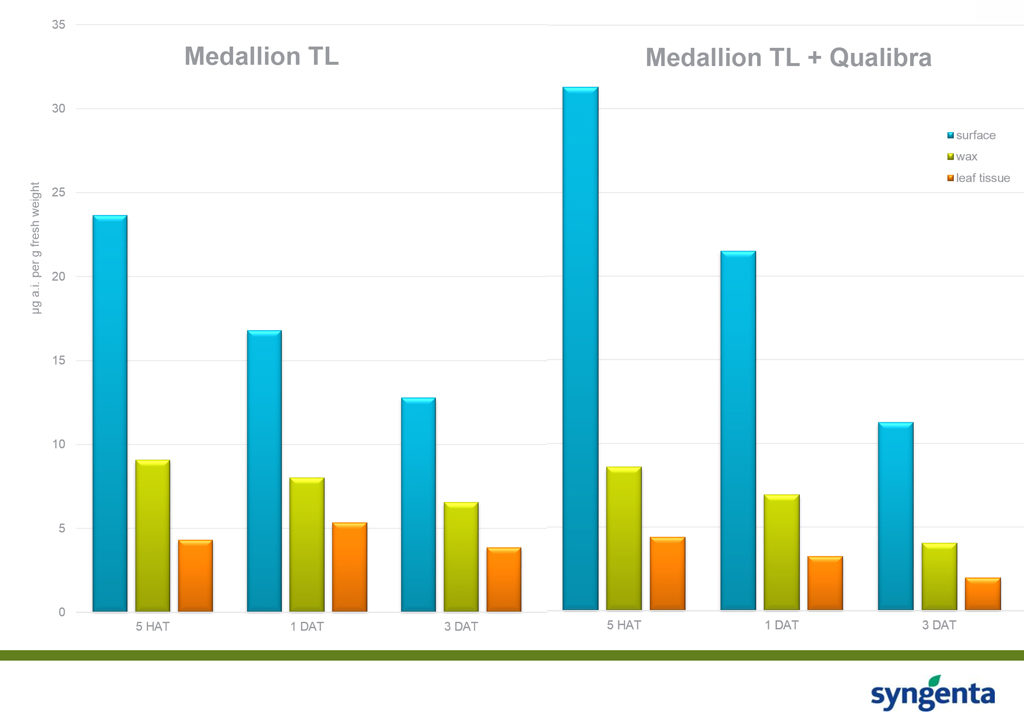
Fig 4. Laboratory trials have shown greater initial recovery of active fludioxonil after application when Medallion TL was sprayed in tank-mix with Qualibra, compared to Medallion TL alone
Further research will continue to evaluate and quantify the potential benefit in terms of improvements in disease control on turf, as well as to fully understand how it can be developed for better bespoke solutions and recommendations for the future.
Leave cutting for longer protection
Contact activity is most appropriate for winter months, when growth is slower and protection typically stays in place on the leaf surface for longer.
However, due to generally warmer weather in winter and the need to provide good surfaces year round, course managers tend to be cutting greens more regularly than previously through the winter.
With this in mind, aim to put on your contact fungicide applications after mowing, to maximise the efficacy of the product and the length of time that it will remain in place.
Disease forecasting and assessment of ITM risks can also help to make more effective spray timing decisions.

